Tour the world, virtually
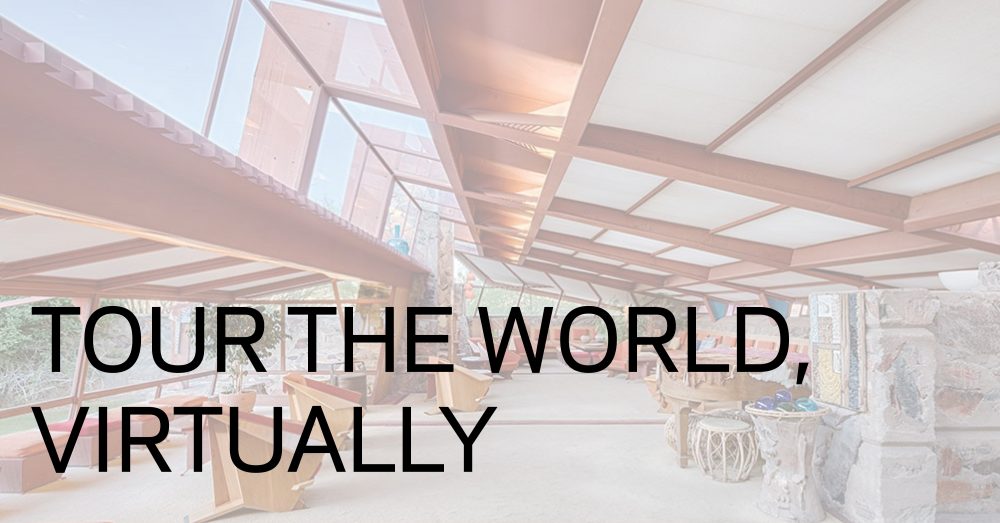
As designers, we look to both the built and natural environment for inspiration. During a season of limited travel and exploration, here are a few of our favorite virtual tours of some of the world’s architectural and natural treasures:
Virtual Tour: Frank Lloyd Wright, Taliesin
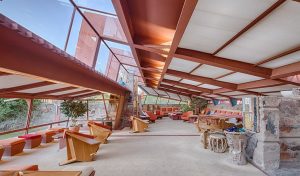 “Following family custom, he [Frank Lloyd Wright] gave the site a Welsh name, “Taliesin” (pronounced Tally-ESS-in), which means “shining brow.” The name symbolized Wright’s intention to create a home that was “of the hill,” not on it. Taliesin was therefore built below the hillcrest, on its brow rather than its crown. Regarded as one of Wright’s most significant expressions of Prairie-style organic architecture, the house uses local materials to echo the expansiveness of the Wisconsin landscape with a layout that the architect described as “low, wide, and snug.” Local farmers helped Wright move stone from the yellow limestone quarry nearby, which he then mixed with sand from the river to create Taliesin’s walls. Plaster for the interior walls was mixed with sienna, providing a golden hue reflective of the pastoral setting. Taliesin features many architectural elements that became Wright’s trademarks: the cantilever roofs, wide windows and an open floor plan.”
“Following family custom, he [Frank Lloyd Wright] gave the site a Welsh name, “Taliesin” (pronounced Tally-ESS-in), which means “shining brow.” The name symbolized Wright’s intention to create a home that was “of the hill,” not on it. Taliesin was therefore built below the hillcrest, on its brow rather than its crown. Regarded as one of Wright’s most significant expressions of Prairie-style organic architecture, the house uses local materials to echo the expansiveness of the Wisconsin landscape with a layout that the architect described as “low, wide, and snug.” Local farmers helped Wright move stone from the yellow limestone quarry nearby, which he then mixed with sand from the river to create Taliesin’s walls. Plaster for the interior walls was mixed with sienna, providing a golden hue reflective of the pastoral setting. Taliesin features many architectural elements that became Wright’s trademarks: the cantilever roofs, wide windows and an open floor plan.”
Virtual Tour: Milwaukee Art Museum
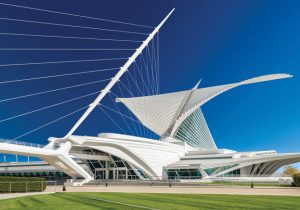 “The Milwaukee Art Museum is an architectural landmark, comprised of three buildings designed by three legendary architects: Eero Saarinen, David Kahler, and Santiago Calatrava. Calatrava is known for his flowing, curved buildings. He uses steel, concrete, and new computer modeling to create compositions that appear at once natural and structurally impossible. The Milwaukee Art Museum addition was Calatrava’s first project in the United States. Feeling insecure about working in the U.S., he actually withdrew himself from the selection process in 1994, only to be coaxed back.”
“The Milwaukee Art Museum is an architectural landmark, comprised of three buildings designed by three legendary architects: Eero Saarinen, David Kahler, and Santiago Calatrava. Calatrava is known for his flowing, curved buildings. He uses steel, concrete, and new computer modeling to create compositions that appear at once natural and structurally impossible. The Milwaukee Art Museum addition was Calatrava’s first project in the United States. Feeling insecure about working in the U.S., he actually withdrew himself from the selection process in 1994, only to be coaxed back.”
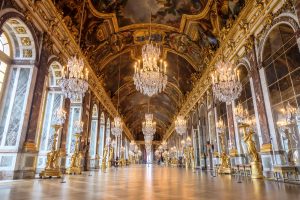 “The Hall of Mirrors, the most famous room in the Palace, was built to replace a large terrace designed by the architect Louis Le Vau, which opened onto the garden. The terrace originally stood between the King’s Apartments to the north and the Queen’s to the south, but was awkward and above all exposed to bad weather, and it was not long before the decision was made to demolish it. Le Vau’s successor, Jules Hardouin-Mansart, produced a more suitable design that replaced the terrace with a large gallery. Work started in 1678 and ended in 1684.”
“The Hall of Mirrors, the most famous room in the Palace, was built to replace a large terrace designed by the architect Louis Le Vau, which opened onto the garden. The terrace originally stood between the King’s Apartments to the north and the Queen’s to the south, but was awkward and above all exposed to bad weather, and it was not long before the decision was made to demolish it. Le Vau’s successor, Jules Hardouin-Mansart, produced a more suitable design that replaced the terrace with a large gallery. Work started in 1678 and ended in 1684.”
Virtual Tour: Walt Disney Concert Hall
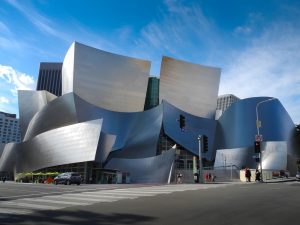 “From its striking outside to its intimate inside, Walt Disney Concert Hall is an architectural marvel that never loses sight of its main function – bringing music to the city of Los Angeles and beyond. In architect Frank Gehry’s original design, Walt Disney Concert Hall was intended to be clad in stone. After receiving much acclaim for his titanium building in Bilbao, however, he was urged to change the stone to metal. With this new material Gehry was able to tweak the shape of the exterior, creating the iconic silver sails we see today.”
“From its striking outside to its intimate inside, Walt Disney Concert Hall is an architectural marvel that never loses sight of its main function – bringing music to the city of Los Angeles and beyond. In architect Frank Gehry’s original design, Walt Disney Concert Hall was intended to be clad in stone. After receiving much acclaim for his titanium building in Bilbao, however, he was urged to change the stone to metal. With this new material Gehry was able to tweak the shape of the exterior, creating the iconic silver sails we see today.”
 “Before starting any building, the Incas performed sketches, drawings, scale models and mock-ups, using measurement systems mainly based on anthropometry (measures with regard to the human body: arms, elbows, feet, steps, spans, etc.). And as proof of this, we can find lots of models, almost all archaeological museums. No other modern civilization in the world could until now, match the technique, ability, and ease with which the Quechuas worked in this part of the world. It is attributed to the Incas, a balanced social organization, spectacular domain to work the stones, knowledge of advanced design, and organized itself, without the influence of other cultures of the continent. This allowed them to develop one of the most advanced civilizations in the world.”
“Before starting any building, the Incas performed sketches, drawings, scale models and mock-ups, using measurement systems mainly based on anthropometry (measures with regard to the human body: arms, elbows, feet, steps, spans, etc.). And as proof of this, we can find lots of models, almost all archaeological museums. No other modern civilization in the world could until now, match the technique, ability, and ease with which the Quechuas worked in this part of the world. It is attributed to the Incas, a balanced social organization, spectacular domain to work the stones, knowledge of advanced design, and organized itself, without the influence of other cultures of the continent. This allowed them to develop one of the most advanced civilizations in the world.”
Virtual Tour: The Sistine Chapel
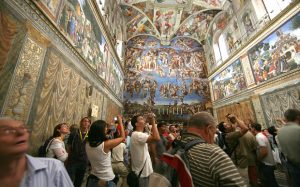 “Architect Giovannino de Dolci was assigned the task of recreating the original Sistine Chapel in its exact spot, known as the Cappella Maggiore, in 1473. The architect’s initial design, however, was more than 120 feet long and seven stories high. The Sistine Chapel resembles a high rectangular building with no doorways because its entrance is through the Papal Palace. The exterior of the Sistine Chapel can be seen only from nearby windows. Its interior is divided into three stories, including a vaulted basement with several windows and a doorway leading to an exterior court. The vaulted ceiling rises more than 65 feet, and a third story forming the upper level of the Chapel sits above the ceiling.”
“Architect Giovannino de Dolci was assigned the task of recreating the original Sistine Chapel in its exact spot, known as the Cappella Maggiore, in 1473. The architect’s initial design, however, was more than 120 feet long and seven stories high. The Sistine Chapel resembles a high rectangular building with no doorways because its entrance is through the Papal Palace. The exterior of the Sistine Chapel can be seen only from nearby windows. Its interior is divided into three stories, including a vaulted basement with several windows and a doorway leading to an exterior court. The vaulted ceiling rises more than 65 feet, and a third story forming the upper level of the Chapel sits above the ceiling.”
